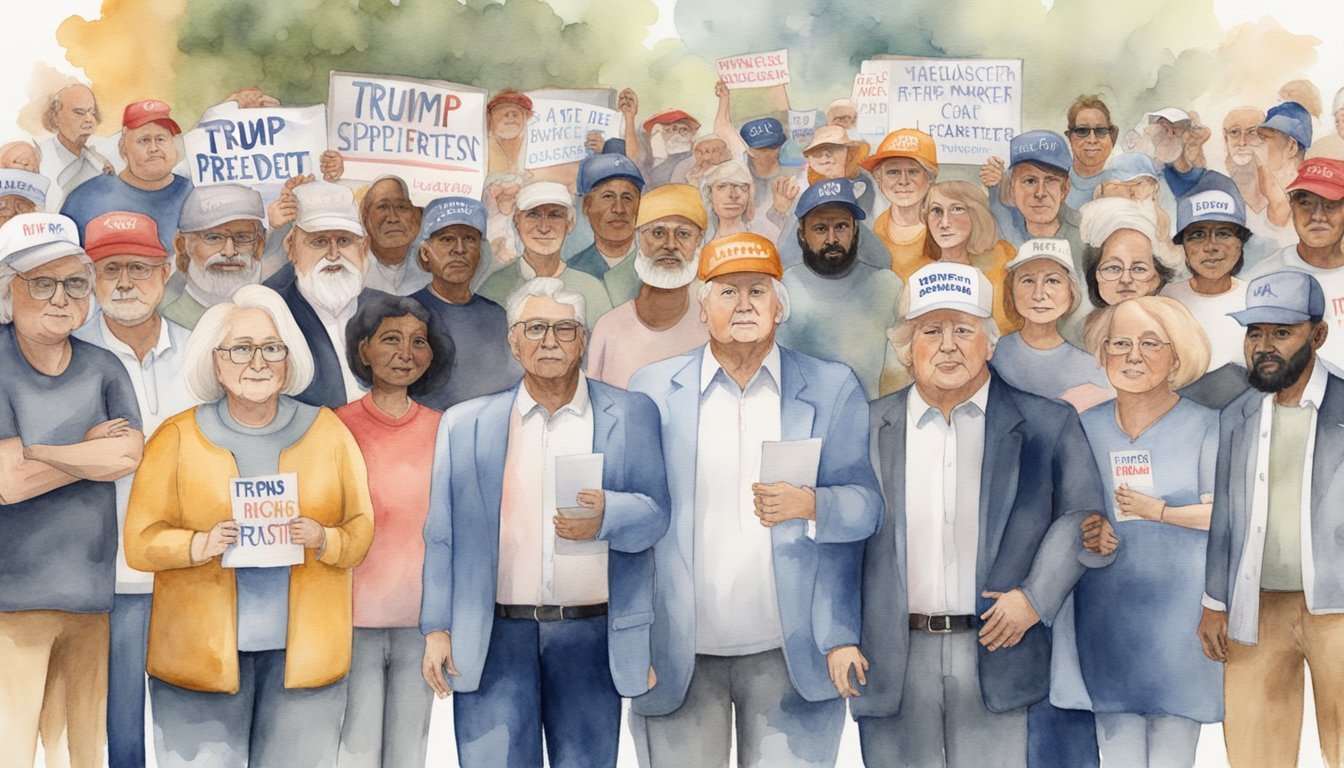Demographic Composition of Trump Supporters

The demographic makeup of those who support former President Donald Trump is diverse, covering a range of ethnicities, education levels, income brackets, ages, genders, and geographic locations. This variety reflects the complexity and nuances within the U. S. political landscape. Supporters cite a range of reasons for backing Trump, including economic policies, immigration stances, and opposition to establishment politics. This broad coalition highlights how political affiliations often transcend traditional demographic boundaries. In a similar way, cultural trends can unite diverse groups, as seen in Taylor Swift’s popularity explained through her ability to resonate with fans across generations and backgrounds.
Ethnicity and Race
Trump’s support base is predominantly White, non-Hispanic voters, though this has slightly decreased since the 2018 midterms. Minority groups, including Hispanic, Black, and Asian voters, have also cast their votes for Trump, with varying levels of support.
Education and Income
Trump’s coalition is heavily comprised of non-college-educated White voters. Yet, some college-educated White voters have also been part of his support base. The income levels among Trump supporters vary, without a clear dominance of either higher or lower-income brackets.
Age and Gender
While Trump’s support spans across different age groups, his supporters tend to skew towards older demographics. Gender-wise, Trump has seen substantial support among White women, although men have historically been more likely to support him.
Geographic Distribution
Geographically, Trump’s supporters can be found across the United States. However, they are particularly concentrated in rural areas and some regions that lean more strongly towards the Republican side. This dynamic reflects Trump’s appeal to voters in non-metropolitan areas and states that are traditionally conservative strongholds.
Political Behavior and Attitudes

The political behavior and attitudes section explores how different demographics, particularly those of Trump supporters, engage with the electoral process and political parties, respond to key issues, and impact election outcomes.
Voter Turnout and Engagement
The 2016 and 2020 presidential elections saw significant participation from Republican voters, with many showing staunch support for Donald Trump. For instance, exit polls highlighted substantial turnout among white evangelical Protestants and very conservative individuals.
Party Affiliation and Ideology
An allegiance to the Republican Party is a strong indicator of support for Trump. Surveys have pointed out a stark ideological divide, with Trump’s backing coming overwhelmingly from those who identify as very conservative or are registered as Republicans. The Trump coalition has also managed to resonate with republican-leaning independents. This support is further reinforced by media outlets and political organizations that align with Trump’s vision, shaping the beliefs of his base. Even among those who wrote the pledge to uphold traditional conservative values, there is a clear tendency to rally behind Trump’s policies and leadership style. His influence within the party remains strong, often dictating the direction of Republican primaries and endorsements.
Response to Key Issues
Positions on key issues like immigration, economic policies, and COVID-19 have been pivotal in forging Trump’s support base. Studies suggest these stances align closely with voters in Florida, Pennsylvania, and other swing states who have been critical in shaping the election landscape in recent years.
Election Influence and Outcomes
Trump’s influence on elections has been measurable, particularly in battleground states like Michigan, Wisconsin, and Arizona. Political scientists attribute this to his appeal among suburban voters as well as those in very rural areas. The response to Trump’s policies and rhetoric has had a direct correlation with voter turnout and engagement in both the presidential and midterm elections.

